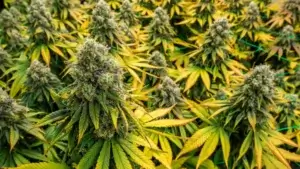Definition
Pollen is the fine, powdery substance produced by the male cannabis plant’s flowers. It contains the plant’s genetic material and is essential for fertilizing female plants to produce seeds.
Purpose and Usage
In cannabis cultivation, pollen is primarily used for breeding purposes to create new strains or propagate specific genetic traits. It is carefully collected and applied to female plants in controlled environments to ensure precise fertilization and seed production.
How It Relates to Cannabis
- Characteristics of Cannabis Pollen:
- Produced by male cannabis plants during their flowering stage.
- Appears as a yellow or white powder that is easily carried by wind or manually collected.
- Contains genetic material for creating seeds with desired traits.
- Role in Cultivation:
- Breeding:
- Pollen from a male plant is introduced to a female plant’s pistils to produce seeds.
- Allows breeders to combine traits such as potency, flavor, and growth patterns.
- Storage:
- Pollen can be frozen and preserved for future use in breeding programs.
- Controlled Pollination:
- Ensures only selected plants are fertilized, preventing unwanted cross-pollination.
- Breeding:
- Impact on Flowering Plants:
- Female plants pollinated by pollen divert energy to seed production, reducing the quality and potency of smokable buds.
Common Misconceptions
Many believe pollen is unwanted in cannabis cultivation, but it is essential for breeding and seed production. Another misconception is that all male plants should be discarded; while they are removed in bud production, they are valuable for genetic preservation. Additionally, some think pollen can only be used immediately, but it can be stored for later use.
Alternatives
- Cloning: A method of propagating cannabis plants without the need for pollen, ensuring genetic consistency.
- Tissue Culture: A laboratory-based alternative for preserving and propagating cannabis genetics without using seeds or pollen.
Importance of Pollen
Pollen is a fundamental component of cannabis reproduction and breeding, enabling the development of diverse and innovative strains. While not relevant for flower production, its role in creating new genetics and preserving desirable traits makes it invaluable to the cannabis industry. Understanding pollen’s purpose ensures its proper use in cultivation and breeding practices.






